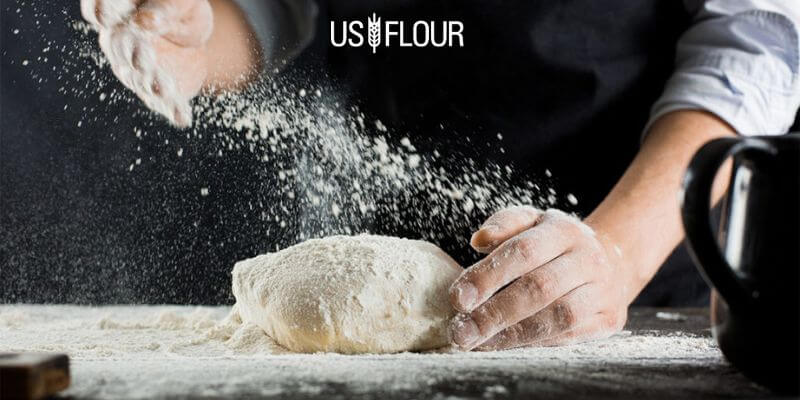Secrets of the Kitchen: Uncovering the Benefits of Vital Wheat Gluten

Some baking recipes require the use of specific ingredients like vital wheat gluten. Most people think of it as one of the different types of flour. However, it has yet to be discovered by many people that it is made of starch and gluten. It is also a super-powdered flour good for use in the kitchen.
What Is Vital Wheat Gluten?
Vital wheat flour looks like flour, but it is not, as it is produced using wheat flour. In its natural form, it is almost pure gluten. The making of vital wheat gluten involves the activation of the gluten, which is the protein content of wheat from wheat flour. Once the wheat flour is hydrated, it is processed to extract all its other components except gluten.
This is achieved by rinsing or washing the dough. Since gluten is not soluble in water, the dough’s starch will dissolve, leaving the gluten behind as a solid. The remaining meal is dried and ground into powder to make super-powdered flour.
A small amount of vital wheat gluten contains a high protein content. For this reason, it is a good alternative for people who do not want meat. It is also commonly known as wheat gluten and can be made at home.
However, it leaves many unnecessary byproducts, and the process could be more laborious. Also, finding it in some stores can take time and effort.
Furthermore, there is Seitan, a vegan or faux meat made from vital wheat gluten. This meat is chewy and has a bland taste. It is a good base for many recipes for an alternative to vegetarian meat.
Uses of Vital Wheat Gluten

The main ingredient used in the preparation of Seitan is vital wheat gluten. Another name that Seitan is popularly called is wheat meat. It often appears as an important ingredient used in many Asian cuisines, and it is also used as an alternative to meat.
You can always get it in powder form. This form is usually mixed with water and other spices to make the dough. The vital wheat gluten becomes very chewy when used for cooking, boiling, baking, or steaming. That is, the texture becomes more meat-like. This is why many people in the vegetarian community use Seitan as a substitute for meat.
Aside from being a meat substitute, it is a binding agent. It is also considered one of the best because it helps hold burgers in place and ensure they do not crumble. It enhances the elasticity of raw dough since it is pure gluten. To help the dough rise more, most baking professionals use vital wheat gluten of about 2 to 3 cups.
Also, it is being used to improve the quality of bread. When used to make bread, it enhances the chewiness, texture, and crumbs of different types of bread. A tablespoon of vital wheat gluten with low-protein flour will help make a good loaf of bread.
Is There Any Difference Between Gluten Flour and Vital Wheat Gluten?
The names gluten four and vital wheat gluten are often used interchangeably because they are commonly not different. However, vital wheat flour can only partially replace regular flour in any baking recipe.
Since the main component of vital wheat flour is gluten, the end product used to bake without regular flour will be shapeless and mushy.
Is Vital Wheat Gluten Healthy?
There are many nutritional values present in vital wheat gluten. The abundance of essential nutrients helps consumers remain active and healthy throughout the day. A low-fat flour, vital wheat gluten can help manage weight gain and maintain cholesterol levels.
With its low cholesterol levels, vital wheat flour is nutritionally safe and heart-friendly when applied to baking products. The high levels of cholesterol in fatty products make them unsuitable to consume if you want to maintain a healthy nutritional diet.
Generally considered a processed food, vital wheat gluten is healthy and safe. However, you must avoid consuming it in any form if you have gluten allergies or suffer from certain conditions like celiac. In addition to its high protein content, it also contains other essential minerals like iron and selenium.
Benefits Of Vital Wheat Gluten

The benefits of consuming vital wheat gluten may include the following:
- High protein content, making it the best choice for people on a vegan diet.
- It is a great source of essential minerals like iron and selenium.
- People that are intolerant of carbs will find it useful because it is low in carbs.
- Its low-fat content makes it healthy for the heart. As opposed to tempeh and tofu, the vital wheat gluten is soy-free.
- Combining it with other ingredients for various baking recipes is relatively easy.
- Its versatility, especially in making Seitan, makes it a good product.
Conclusion
Consuming vital wheat gluten is safe and healthy except if you are gluten intolerant. Combining it with a balanced diet consisting of whole plant-based foods can provide more protein-rich food products you can add to your diet. Despite being good for body health, ensure that you consume only moderate or recommended amounts to avoid issues.
 Power to The Bakers.
Power to The Bakers.